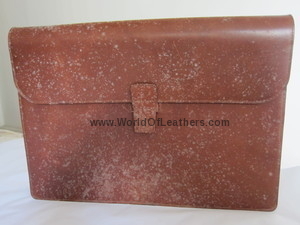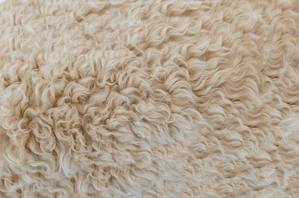Leather (finished product/tanned hides) requires proper storage and when done correctly, will last for decades in mint condition, ready for that special application that you have been saving it for, so let’s find out how to go about it. But first you need to know your leather.
The two most common and widespread methods of tanning leather are vegetable tanning and chrome tanning. We shall focus on vegetable tanned leather because what applies to it is largely the same for chrome tanned leather too.
Veg tanned leather is quite fragile. When exposed to light especially sunlight, it light burns just like sunburns on your skin would. The leather may darken in areas exposed to any type of indoor light or sunlight, leaving the remainder intact. The intact areas would be relatively paler, whereas the exposed areas would be darker, depending on the amount of light received. The exposed area tends to stiffen and dry out, making it a tad more difficult to work on.
Heat and humidity are the 2 other major risk factors. Humidity is especially problematic because too much of it makes mold and mildew grow on the leather surface. Conversely, insufficient moisture over extended periods of time dry rots leather, rendering it useless. 
Heat often combines forces with high humidity to accelerate molds’ growth, and heat in drier environments also speed up the drying out process. Colder environments are less of a problem, but you don’t want to freeze leather either, rendering it stiffer and more difficult to work on.
Note: Any damage sustained by leather caused by improper storage is often irreversible. Prevention is infinitely better than the Cure!
Wear gloves or have clean hands, whenever handling your own leather!
Leather should preferably be stored away from light, at room temperature (about 65º-72º F.) with around 55% humidity, and ideally in a breathable protective wrapping.
Leather Storage Golden Rules to follow strictly:
1. Store leather in a lightproof or low light environment. AVOID direct light at all costs because direct sunlight can even permeates protective wrapping paper.
2. Wrap leather with heavy dark colour protective paper to keep ambient light away.
3. Store in 50% – 55% humidity. Damp basements or closets should never be used.
4. NEVER wrap leather in plastic. It can’t breathe and tightly sealed plastic wrapping can cause mold to form. Mold damage is often irreversible. Paper allows leather to breathe while keeping it clean. Drape wrapped leather with a well-laundered white bed sheet to keep dust off.
5. NEVER store leather on bare cement floors, or even cement flooring with carpeting on it. Cement acts like a water magnet, releasing considerable moisture at will! So, keep leather off the floor and place it on elevated shelving high enough off the floor to prevent moisture from creeping up into the leather.
6. NEVER fold leather. Always roll it up to prevent creases and preserve its smooth appearance. Leather can either be rolled up inside out or outside out. It may be advisable to roll it the way it came from the shipper, as it probably already has a “set” to it by the time you receive it. ALWAYS roll it from the neck to the butt, as the butt is the stiffest part of the hide and may not withstand a sharp bend to initiate the rolling process.
Roll softer leathers around a clean cardboard tube in the same manner carpets or paper are rolled on. Then cover the roll with protective paper, tucking in the ends of the paper around the leather edges. Tie securely, but gently to avoid leaving a mark with a soft string or a thin colour fast leather thread/cord/lace/strip that will not bleed through the paper wrap, as oils or colors can bleed through, causing a permanent stain.
7.  Always roll saddle woolskins with the wool on the inside, beginning at the neck and rolling toward the butt. Tie gently with a soft string.
Always roll saddle woolskins with the wool on the inside, beginning at the neck and rolling toward the butt. Tie gently with a soft string.
For short-term storage, paper wrapping woolskins is unnecessary because any light burns on the non-wool leather side will be hidden when the saddle is made.
For longer-term storage, prolonged exposure to any kinds of light (direct or indirect) should be avoided by protective paper wrapping.
8. Separate oily leathers (such as harness, bridle, or latigo) away from non-oily leathers with an impenetrable barrier in between to prevent the oils from irrevocably staining the non-oily leather.
9. Keep colored leather that may bleed its color (e.g. certain Latigo leathers) away from everything else by placing an impenetrable barrier in between.
10. Keep insects, animals including pets and pests away from leather. Nest building, insects and animals droppings and urine can have a devastating effect on leather.
11. Keep careless people especially pesky children away from leather at all costs. Itchy fingers can leave permanent fingerprint stains.
12. Avoid metal contact with leather, tanning agents used in both vegetable tanned and chrome leather often react with most metals especially ferrous metals such as (iron and steel), brass, nickel, silver, copper, and bronze. Metal stains are often permanent, thus destroying the aesthetic and commercial value of leather.
13. Always store rawhides carefully on its own. The salted surfaces stain everything near it and attract rodents. Always ensure it is thoroughly dry before storing it. Never roll up wet rawhides, allow it to be substantially dry first. While still relatively flexible, begin to form them into a large loose roll.
Carefully monitor rawhide as it dries, to ensure it forms in the shape you need for storage while drying. Keep humidity and moisture levels low enough so rawhide does not smell like rotting flesh. Rawhide is not tanned yet and it will putrefy in a moist environment.
14. NEVER mix different types of leather in the same storage bin, shelf, or area. Always store the same kinds of leather together: the same tannages, the same color(s), the same levels of oiliness, etc.
15. All of the above also apply to storage of leather scraps. Keep them in separate boxes or bins. Never put wet leather or wet rawhide into scrap boxes, as it can stain or create mold on other valuable scraps. Allow to dry first. It is good housekeeping practices to sort scraps by size as well as leather types.
16.  Erect heavy commercial steel shelf framing with good size wooden shelves that can hold a lot of weight. Leather is very heavy, especially when you have many rolls on the same structure.
Erect heavy commercial steel shelf framing with good size wooden shelves that can hold a lot of weight. Leather is very heavy, especially when you have many rolls on the same structure.
Make the top shelf no taller than you can comfortably reach for a 25 lbs. side of leather above your head (for most people, the top shelf will be about 5-6 ft tall).
On separate shelves, bridle, harness, and latigo may also be stored in this way.
Leather is a very expensive commodity with countless uses. In order to gain the greatest use of it and maximize your profits, proper storage is essential to prolong the life of your leather, keeping it as good as the day you received it from the tannery or shipper.